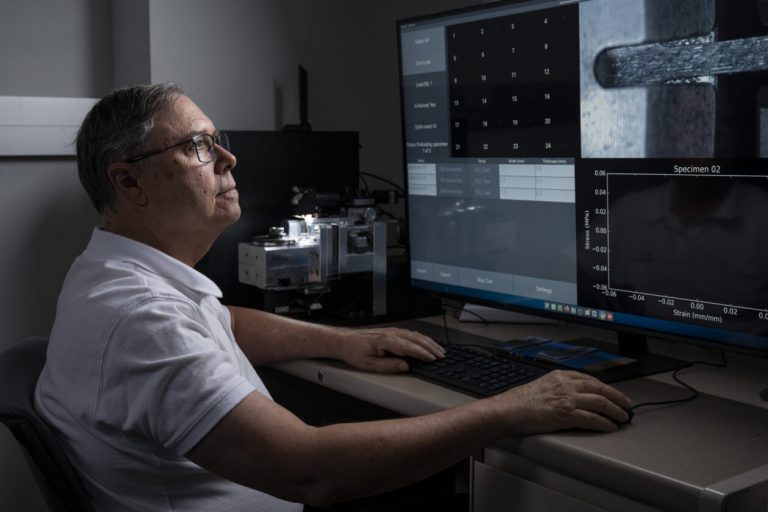Researchers at Missouri S&T are studying the strength of bonds between a new less-enriched uranium fuel and the metals that will contain it — allowing nuclear research reactors to potentially transition to a fuel with a reduced risk of being targeted or stolen for malicious purposes.
The U.S. Department of Energy’s Idaho National Laboratory (INL) initiated the work with the S&T team, which is led by Dr. Joseph Newkirk, S&T’s chair and professor of nuclear engineering and radiation science. INL awarded S&T about $1 million in funding over a three-year period.
“Many of the nuclear research reactors in universities that came online several decades ago were fueled with highly enriched uranium, which is more powerful but not always necessary,” Newkirk says. “It’s like choosing an expensive sports car or a basic sedan — both can do the job, but you don’t typically need the more powerful model for scientific testing and educational purposes.”
Of the nation’s 25 university research reactors, several were either developed to use uranium that was less than 20% enriched or had designs allowing them to make the switch to a different low-enriched fuel. However, a new fuel with uranium and a metal called molybdenum would be the best fit for at least five reactors.
“The fuel used in these high-performing research reactors is in plate form,” Newkirk says. “The plates aren’t very large. You could picture them being around the size of a skateboard, and a reactor will have several of them, with several plates stacked together to make a fuel assembly. When the fuel assemblies are not in use, they are stored in a cooling area that looks like a swimming pool with tens of thousands of gallons of water.”
The issue, Newkirk says, is this new fuel requires a different fabrication technique with aluminum and zirconium metals to contain the uranium than what has worked for other fuels, and this technique needs to be evaluated for performance before reactors make the change.
In simple terms, Newkirk says, the key is to determine how these materials can have the strongest bonds possible to ensure there is zero chance of the fuel leaking as it swells against the bonds and causing any potential safety risks.
Newkirk and his co-principal investigator for the project, Dr. Frank Liou, will use an automated mechanical testing machine developed by Liou to conduct some of the hands-on portions of their research. They will study conditions that lead to weaker or stronger bonds and test the bond strengths with new methods they will develop.
Liou is S&T’s Michael and Joyce Bytnar Product Innovation and Creativity Professor of mechanical and aerospace engineering and director of the Intelligent Systems Center.
Researchers from INL, including Jason Schulthess, a senior staff scientist, will also collaborate with S&T on the project.
Missouri S&T is home to the first operating nuclear reactor in Missouri, but its enrichment level is not so high that it is a candidate to potentially switch its fuel source. However, Newkirk says he is glad to help his colleagues working with other reactors throughout the U.S. work to develop this new low-enriched fuel.
“This project is all about problem-solving,” Newkirk says. “Our goal is to keep the fuel fully contained and ultimately contribute positively to the body of nuclear knowledge — leading to a chain reaction of even more breakthroughs in the field.”
For more information about Missouri S&T’s nuclear engineering programs, visit nuclear.mst.edu.








